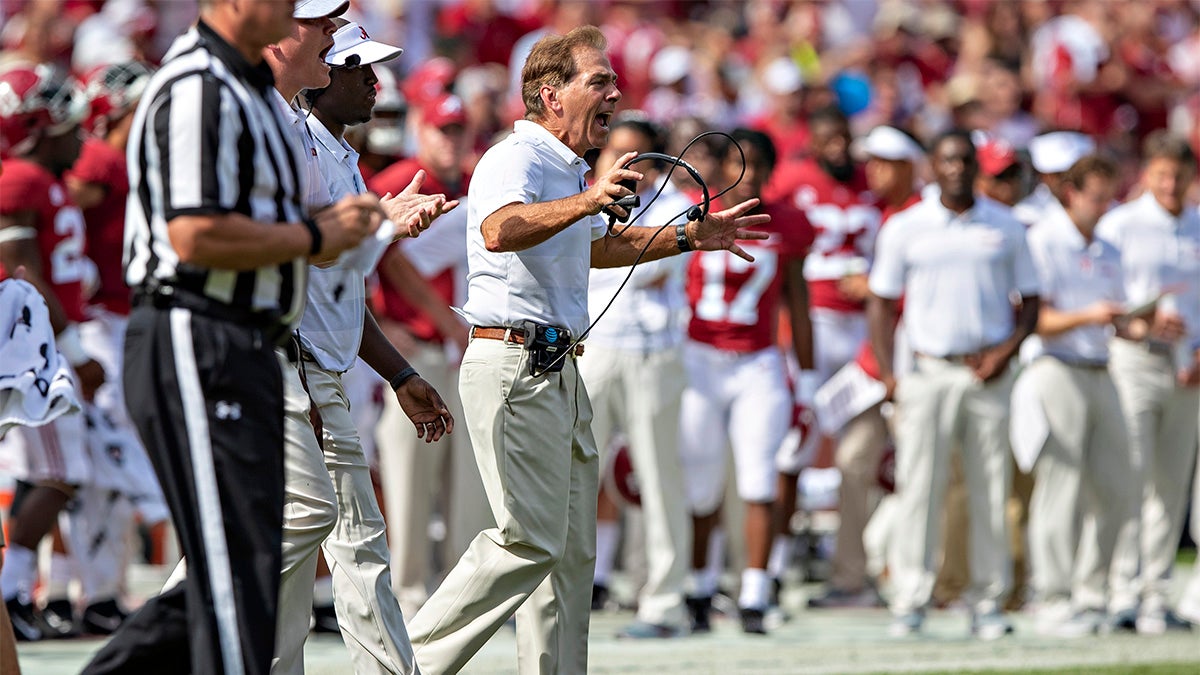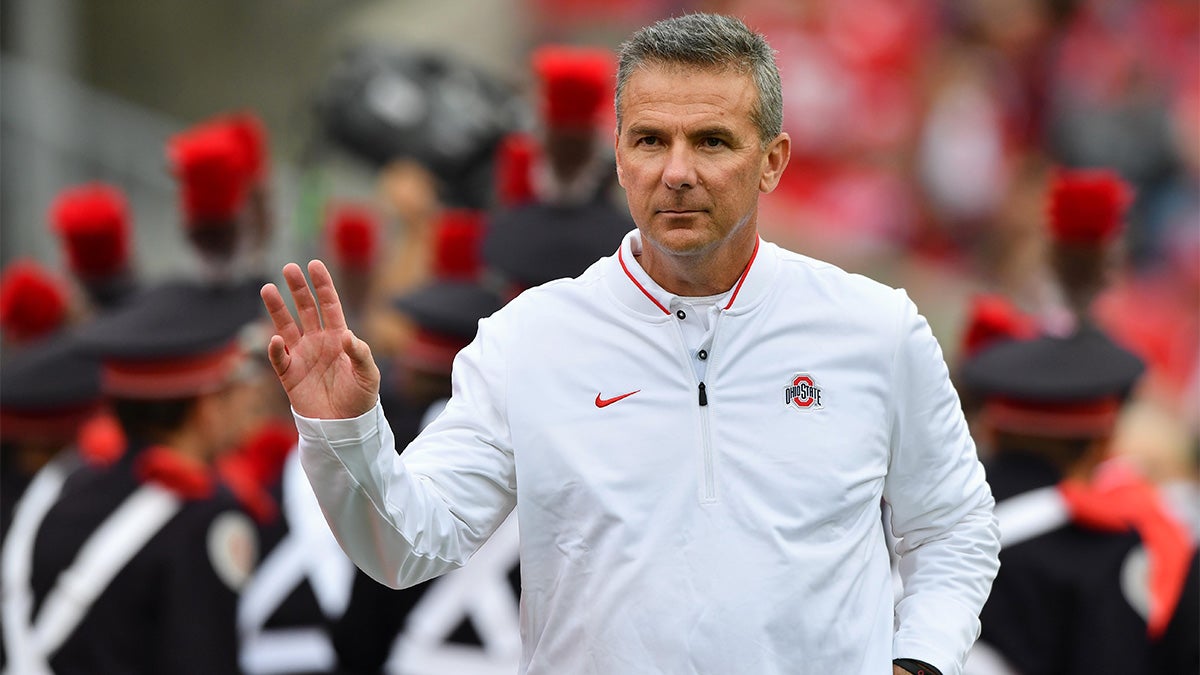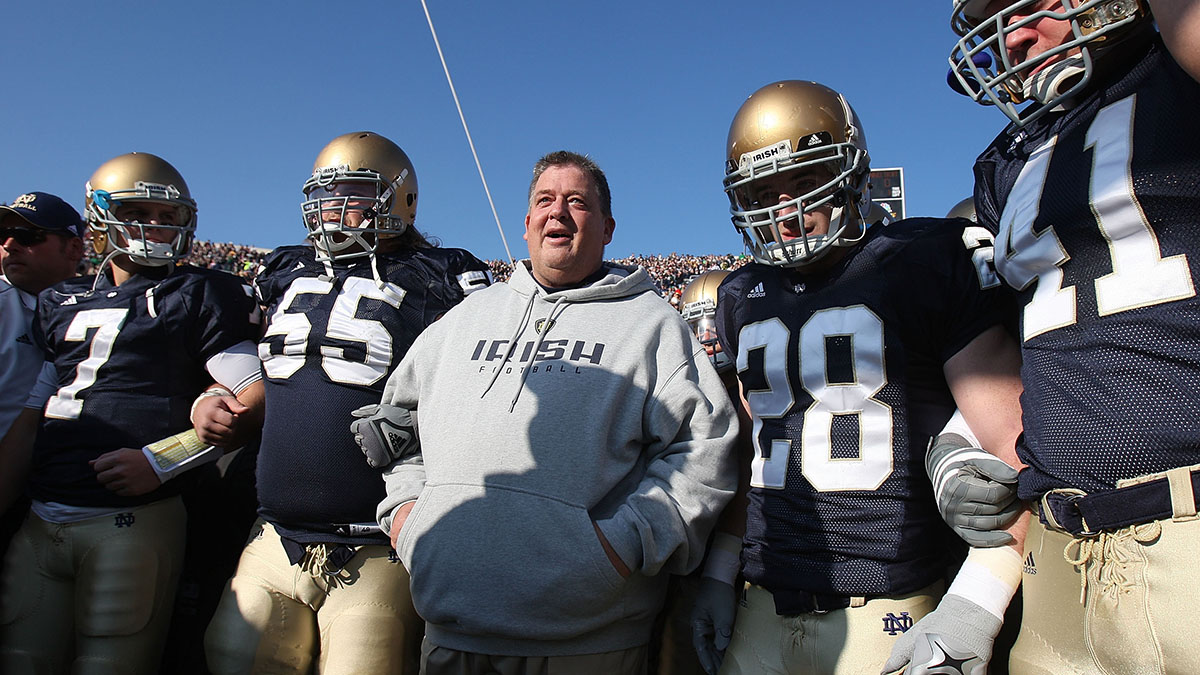It's just talk: How rumors can earn college football coaches big pay days

Year 5 of the College Football Playoff could also be called “The Millionaire Boys Club.”
The combined annual salaries of the coaches in this season’s final four is a tidy $21.5 million: Alabama’s Nick Saban ($8.3 million), Clemson’s Dabo Swinney ($6.2 million), Oklahoma’s Lincoln Riley ($4.8 million) and Notre Dame’s Brian Kelly ($2.2 million).

Those figures are base salaries reported by the schools and don’t include incentives or other compensation. For instance, don’t feel badly and start a GoFundMe for Kelly; he earns another $1.15 million for TV/radio appearances and also receives an unknown compensation from Under Armour, the school’s apparel supplier.
Saban is college football’s highest-paid coach; last year his compensation was $11 million because of a one-time $4 million bonus. Two other teams that were in this season’s CFP chase – Ohio State and Georgia – were coached by Urban Meyer ($7.6 million) and Kirby Smart ($6.6 million).
Meyer, who announced he was retiring after the Buckeyes play in the Rose Bowl, was second to Saban and just ahead of Michigan’s Jim Harbaugh ($7.5 million) on the salary scale. Ohio State named Ryan Day, who filled in when Meyer was suspended for three games earlier this season, as its new coach. He has no head coaching experience. Day’s starting salary is $4.5 million a year.
[beauty_quote quote='“On campuses, the size of those coaches’ salaries is an issue. Most of the fans and supporters of teams consider it the price of doing business and competing. But in higher education, those salaries are an anomaly.” - Todd Turner, founder and president of Collegiate Sports Associates']
No need for a BREAKING NEWS alert. High-level collegiate athletics is money ball. Those who are benefitting from the rising tide – coaches and their agents – say it’s just the free market at work. Others will blanch and ask how a campus power structure is viable when the football coach makes millions more than the school president and tenured faculty members.
“On campuses, the size of those coaches’ salaries is an issue,” Todd Turner, founder and president of Collegiate Sports Associates, said in a telephone interview. “Most of the fans and supporters of teams consider it the price of doing business and competing. But in higher education, those salaries are an anomaly.”
And those salaries can grow like mildew in a shower stall. Often, a coach needs only to have a conversation and a job offer to enhance his contract.
Purdue coach Jeff Brohm, a middling 13-12 in two seasons with the Boilermakers, received a 50-percent raise ($4 million to $6 million) last month. He was courted by Louisville, his alma mater, with a seven-year deal for $35 million. Purdue, not exactly known as a “football school,” no doubt benefits from annually earning $50 million in revenue sharing from the Big Ten Conference. Brohm’s value was no doubt enhanced when the Boilermakers upset Ohio State in October, a loss that kept the Buckeyes out of the CFP.
If reports of Jeff Brohm's bump to $6 million/annually are true, he'll be the ninth highest-paid coach in the country. Purdue will be paying their head football coach more money than these programs: Oklahoma, Texas, Penn State, Nebraska, Miami.
Wow.
— Derek Schultz (@Schultz975) November 29, 2018
While university presidents sit atop the organizational chart, at the top football schools they seldom make as much money as the football coach.
“It shifts the power dynamic,” David Ridpath, associate professor of sports administration at Ohio University, said in a telephone interview. “Presidents in many cases are really powerless to control some of these coaches. That’s what can fuel some the scandals that have occurred because the coaches are so untouchable.”
Turner is a former athletic director at Connecticut, North Carolina State, Vanderbilt and Washington before starting his company, which concentrates on consulting work and executive searches. He explains salary increases involve market evolution plus two other factors.
“University leadership – presidents, athletics directors, even board members – are feeling pressure to steward their athletic program to be competitive no matter the cost,” he said. “Plus, the agents and representatives of coaches have done a really good job to leverage the job market to their benefit.”
According to figures compiled annually by USA Today, the top 10 coaches in FBS football earned a total of $66.7 million in base salaries. That figure is the floor and doesn’t include bonuses and other monetary supplements to their contracts.
Assistant coaches – specifically offensive and defensive coordinators – are also benefiting. LSU defensive coordinator Dave Aranda was paid $2.5 million this season, one of 20 assistants – a single-season record – to earn seven figures. The top 10 assistant salaries – all coordinators – totaled $18 million.
[beauty_quote quote='“It’s really part of the arms race with everybody trying to one up each other. The money always seems to be there." - David Ridpath, Ohio University associate professor of sports administration']
Football’s reliance on and value of strength and conditioning coaches is leading to those positions earning disproportionate salaries. Chris Doyle of Iowa is the highest-paid strength coach at $750,000. That salary is higher that 28 coaches at the 130-team Football Bowl Subdivision level.
“It's really part of the arms race with everybody trying to one up each other,” Ridpath said. “The money always seems to be there. And there are fixed costs because the labor (student-athletes) isn’t getting paid. I don't disagree with the argument that it’s a free market, but my point is if that’s the case then everyone needs to participate in that free market.”
The schools that compete for the national championship in college football are a select club. The 20 slots in the first five years of the CFP went to 10 teams. In the 16 previous years of the Bowl Championship Series (which matched two teams in a title game, 32 possible spots), 15 schools played for the crystal football trophy.

That championship chase can be intoxicating.
Texas A&M, which won its only national championship in 1939, made the biggest move following the 2017 season by hiring Florida State coach Jimbo Fisher. He won a national championship with the Seminoles in 2014, and that singular achievement enticed the Aggies’ leadership to give him a 10-year, $75 million contract that is fully guaranteed. This season, his first in College Station, Texas A&M finished 8-4 – equaling the regular-season win totals in three of the previous four seasons.
Coincidentally, in 1982 it was considered shocking when Texas A&M hired Jackie Sherrill as its football coach for a six-year, $1.2 million contract.
Schools striving for national championships are often willing to bind themselves with golden handcuffs. As coaching salaries have increased, so to have contract clauses that protect the coach while burdening schools with paying millions to say goodbye – the so-called buyout.
Charlie Weis is the personification of the buyout clause.
Just halfway through his first season as the coach at Notre Dame in 2005, there were whispers (perhaps floated by his agent) that Weis was garnering interest from the NFL for a coaching job. That prompted Notre Dame athletic director Kevin White to sign Weis to a new 10-year contract worth between $30 million and $40 million.
Weis was fired after the 2009 season; Notre Dame owed him $19 million.
In December 2011, Weis was hired by Kansas, signing a five-year contract. That gig lasted less than three seasons and Weis was fired in September 2014. Kansas owed Weis $5.6 million. Weis earned nearly $25 million from two schools to NOT coach. In a 90-game college coaching career, he earned $1.6 million per victory.
Dismissing a coach and hiring his replacement can be a costly enterprise. North Carolina dismissed coach Larry Fedora in November and owed him $12 million on his contract. The school hired Mack Brown – who had previously coached the Tar Heels for 10 seasons – to a $16 million contract.

A year ago, Auburn reached the Southeastern Conference championship game. Soon after, the Arkansas job came open and there were rumors – real or imagined – that Auburn coach Gus Malzahn might be interested. Panicked the Tigers might lose their coach, the school sweetened Malzahn’s deal to $6.7 million per season with a buyout of – wait for it – $35 million.
This season, Auburn finished a disappointing 7-5 season that started with the Tigers in the top 10 in preseason rankings. Soon after the season, rumblings from the school’s powerful boosters indicated the willingness to pay the man his money and change coaches. There also were reports that Malzahn might consider a contract change to reduce the buyout figure.
“These buyouts are huge issues and they make it very difficult to make a coaching change,” Turner said. “I don't fault the coaches or their agents for negotiating them. But I do think universities have been short-sighted in putting almost unfathomable buyouts in some of these contracts. Good for the coaches – it gives them financial security.
“But the fault for the rise in and use of the buyout clause lies at the feet of the university presidents, athletic directors and boards of regents. They have allowed themselves to be leveraged. They’re way out over their skis.”
Those opposing the salary escalation have little hope to stem the growth. Florida’s Steve Spurrier is considered the first $1 million coach. He signed his seven-figure deal in 1996. In 22 seasons, the salary for the highest-paid coach has increased eightfold.
The idea of capping coaches’ salaries would face legal challenges and would likely require Congress to craft some sort of specialized anti-trust legislation for college sports. In the late 1980s, the NCAA required that men’s basketball coaching staffs have one assistant tabbed as a “restricted earnings” coach ($16,000 a year). The NCAA lost in court when charged with violating Section I of the Sherman Act.
[beauty_quote quote='“These buyouts are huge issues and they make it very difficult to make a coaching change. I don’t fault the coaches or their agents for negotiating them. But I do think universities have been short-sighted in putting almost unfathomable buyouts in some of these contracts." - Todd Turner, founder and president of Collegiate Sports Associates']
The latest tax bill passed by Congress included legislation requiring colleges and universities be charged a 21 percent excise tax based on their five highest-paid employees. On many campuses, those employees would be football and/or basketball coaches.
However, the actual wording of the excise tax is vague and there’s uncertainty how or if that would create heartburn for schools who pay their coaches large salaries.
Asked if a 21 percent excise tax might give schools pause to continue paying coaches higher salaries, Turner was succinct with his answer:
“No.”
It’s apparent the biggest schools can’t help themselves when chasing and hiring coaches. The temptation is no different than kids in candy stores.
“Nobody will stand up and say, ‘Hey, we can’t afford this coaching salary.’ Or say ‘Hey, this is not appropriate,’” Turner said. If they do that, they’ll be accountable for the outcome. And if it’s an outcome where they let a good coach move on and win elsewhere, they might lose their job. And everybody likes job security.”
That sentiment is certainly true for well-compensated college football coaches.
Wendell Barnhouse started his career as a sportswriter at 18 and spent the next four decades in newspapers writing and editing. From 2008-2015 he was the website correspondent for the Big 12 Conference producing written and video content. He has spent the last three years freelancing, most recently covering college basketball for The Athletic.
Related Articles
Dartmouth hiring Callie Brownson shows growth of women in football
If player deaths aren't enough, what will change coaching culture?
Non-profit colleges bringing in 'Fortune 500' revenues through athletics


